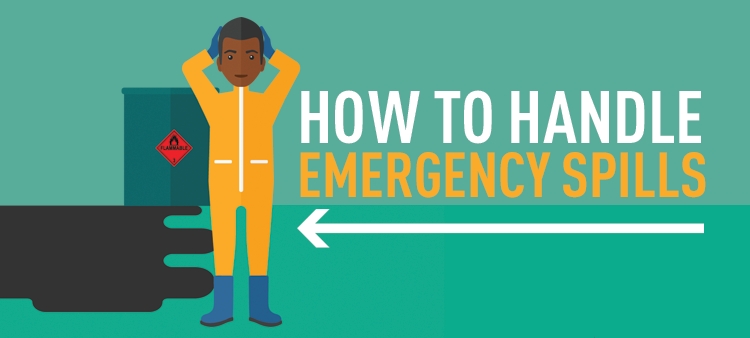Editor’s note: Welcome to the ninth post in our series on Absorbent Training. We hope you find the series to be helpful in explaining the basics of absorbents.
Spills happen. Most of the time they’re small enough to clean up without a second thought. But what about a nasty spill you can’t handle yourself? That’s when you need the Spillbusters — trained hazmat responders with the resources to take control in an emergency.
Here’s the sticky part — a spill that’s no big deal in your work area could create a disaster if it reaches a storm drain. How can you be sure about what you’re dealing with?
A matter of Interpretation
Spills are lumped into two categories: incidental and emergency. In their interpretation letter, OSHA identifies the characteristics of incidental and emergency spills:
“An incidental release is a release of a hazardous substance which does not pose a significant safety or health hazard to employees in the immediate vicinity or to the worker cleaning it up, nor does it have the potential to become an emergency.”
“The Hazardous Waste Operations and Emergency Response (HAZWOPER) standard does not define an emergency in terms of the quantity of the substance spilled. The term ‘emergency’ is dependent upon several factors, including the hazards associated with the substance, the exposure level, the potential for danger and the ability to contain the substance.” OSHA makes these definitions broad for a reason — every spill is different and a lot of factors need to be considered. In some facilities, a 100-gallon spill may be incidental. In others, even an ounce can evacuate the building. Here’s another example: If 30 gallons of oil spill in a warehouse and it doesn’t hit a drain, you would consider it incidental. But if you spill as little as a pint of the same oil outside — and it hits a storm drain — you probably have an emergency on your hands.
Here are three essential components to help you determine if a spill is incidental or emergency:
- The properties of the liquids stored at your facility
- Where the spill is located
- The training level of the employees
Get Spillbusters
OSHA created the HAZWOPER standard to help protect workers and establish training criteria for five different types of workers who could be exposed to hazardous substances. Let’s just cut to the one that pertains to workers who would respond to emergency releases of hazardous substances — in other words, the Spillbusters who will clean up the big, nasty spills at your facility.
The people responding to any emergency release must have rigorous training and be certified in accordance with the HAZWOPER standard (29 CFR 1910.120). This training prepares them to recognize hazards and take the appropriate actions to protect themselves during a response.
But not everyone needs to be trained under HAZWOPER. OSHA has made it clear that if workers will only be cleaning up incidental spills, their response training may be incorporated into hazard communication or another type of safety training.
Even if they’re not required to have HAZWOPER-level training, anyone responding to incidental spills should know:
- The hazards of the liquids present at the facility
- How to choose and use appropriate PPE
- How to clean up a spill properly
- What to do with spent cleanup materials
- What criteria make a spill an emergency — it could be volume-specific, chemical-specific, area-specific or all three
- How to initiate an evacuation or call in trained responders in the event of an emergency release
Want to learn more about absorbents?
Go to Absorbent Training Part 10: Top 12 Places to Store Your Spill Kit.






 Get your very own
Get your very own




